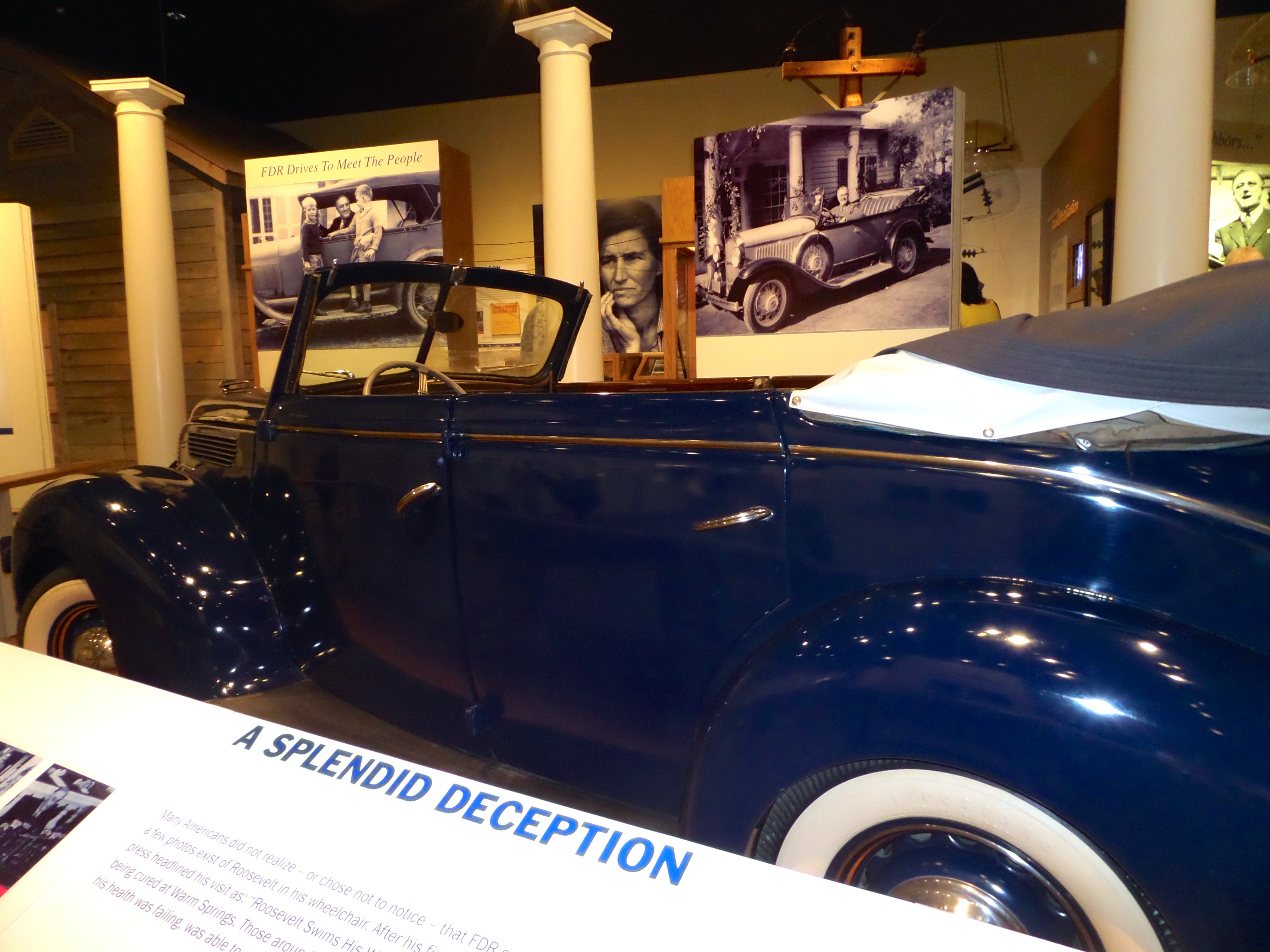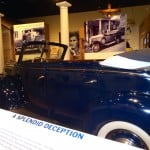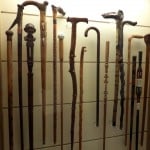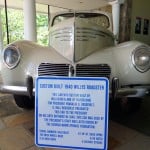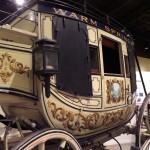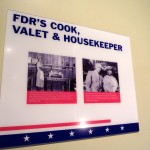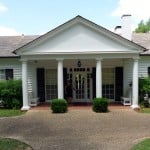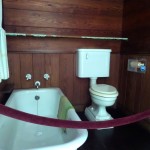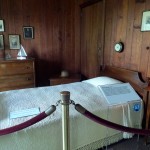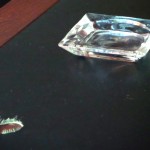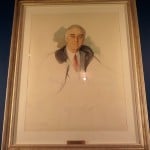Coming home from my recent swing through the Deep South I found myself northeast of Columbus, Georgia on a byway. I came upon a brown highway sign—always a welcome sight to my eyes—that said “FDR’s Little White House 15 miles.” The arrow pointed left.
I smiled broadly, having a vague memory of such a place from the Eleanor Roosevelt mysteries I once borrowed from the public library’s audio book collection. I made the left turn and mentally recalculated the rest of my itinerary.
And that, friends, is one of the many beauties of solo travel: no one to consult or negotiate with when something you want to do comes across your path.
Two tips for getting the best out of a solo vacation:
Be flexible. Flexibility and freedom are the top perks to solo travel. Leave plenty of time for serendipitous moments at a diner or museum and roadside attractions that pop up unexpectedly.
Don’t buy your tickets to shows and attractions in advance. Granted, some tickets sell out quickly, but you don’t want to anguish over the decision to do something you’ve already paid to do and something else you’d rather do once you are on your trip.
Stop at Manchester’s President Theater first
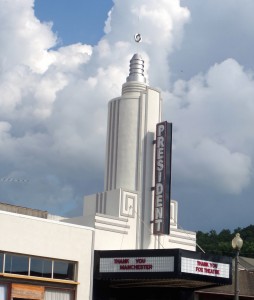 I arrived too late in the day to take the Little White House tour, so I stopped at Manchester, where I unexpectedly came upon the President Theater. I didn’t get a chance to see inside the theater, still being renovated, but the outside is striking—I love Art Deco.
I arrived too late in the day to take the Little White House tour, so I stopped at Manchester, where I unexpectedly came upon the President Theater. I didn’t get a chance to see inside the theater, still being renovated, but the outside is striking—I love Art Deco.
Local history has it that Roosevelt took a phone call in Manchester from New York Democratic Party operatives in 1928 that led to him (successfully) running for governor.
After dinner I traveled the remaining five miles to Warm Springs, home of the Little White House, and grabbed a hotel room, washed some clothes and answered email.
FDR’s Little White House: worth a detour
According to the official website, FDR first came to Warm Springs in 1924 hoping to find a cure for polio, which struck him in 1921. “Swimming in the 88-degree, buoyant spring waters brought him no miracle cure, but it did bring improvement.”
The excellent museum on the property even has footage of Roosevelt frolicking in the springs with children who were there for the cure. It took my modern sensibilities a moment to adjust to the sight of kids “ganging up” to push him under the water’s surface, only to see him emerge from the depths, laughing like he was a schoolboy too.
FDR lived at a pivotal time in world history and the museum shows him to us through the lens of the Great Depression. Technology and manufacturing techniques were exploding in capabilities and their ability to shift public priorities in both the United States and abroad. In an odd coincidence, I had watched The History Channel’s 2014 series The World Wars, over Memorial Day Weekend, so I was primed for the experience, but still had plenty to learn.
Take at least an hour to view the exhibits and another 14 minutes to see the video narrated by Walter Cronkite (sorry, no embed link but you can watch it here). Be sure to read the captions of all photos.
- FDR used this Ford with hand controls to visit farmers in the area. His Rural Electrification Bill was inspired by what he learned from those visits and was signed at Warm Springs.
- One of three cases of hand-carved canes from citizens from all walks of life. Some elaborate, others plain.
- Rare Willys Roadster custom built for FDR
- The “Tally Ho” stage coach came with the Warm Springs property. FDR and Eleanor dressed up as George and Martha Washington and rode in it for the parade to celebrate his election as NY Governor.
- The staff had their own quarters on the grounds but the secretary had her own room in the home
- Of course the gift shop has items for all ages. Fala was Roosevelt’s beloved terrier, but I can safely state he never carried her as a fashion accessory in a purse.
Roosevelt slept in a twin bed and died at Warm Springs
FDR built his retreat in 1932 as he began campaigning for the presidency, only to name it The Little White House after he won the office. In the 21 years he owned the property he visited 41 times. Roosevelt frequently brought along dignitaries and cabinet members, who stayed in a guest house on the property. The Marines who patrolled the area slept in tents.
The Little White House is really a one-story cottage of only 1300 square feet with six rooms. FDR slept in a twin bed, pictured below.
While posing for a portrait on April 12, 1945, he told the artist “Just fifteen more minutes.” He suffered a stroke fifteen minutes after speaking those words and died shortly thereafter. The watercolor work in progress is preserved there as “The Unfinished Portrait.” (See my snapshot of it in the bottom right of the gallery below.)
- Look carefully and you will see me at the door. Okay, look VERY carefully. Squint if you must!
- FDR’s bathroom was a “Jack-and-Jill” type, with Eleanor’s bedroom on the other side
- FDR’s twin bed. Note the modest decorations, all of sailing and the sea, FDR’s passion.
- The 32nd president of the United States suffered his stroke in this chair at this table, while sitting for a portrait.
- FDR’s ashtray and burned table top. This is where he sat for his portrait on the day he died.
- The “Unfinished Portrait” by Madame Elizabeth Shoumatoff. FDR died of the stroke he suffered while sitting for it.
Memories from my childhood surfaced
Just before leaving on my Deep South Roadtrip, I wrote about the emotional difficulties of giving away so many treasures I had inherited from my grandparents when we downsized to an urban townhouse. Well, my grandparents toured the Depression Era Little White House with me in spirit. Nothing significant has been changed since FDR’s death.
The furnishings, including glassware, appliances and an insecticide pump, brought back childhood memories of my grandparents’ home. Mamaw was handy with needles of all types—sewing, knitting and embroidery—and Roosevelt’s linens reminded me of hers.
It occurred to me that FDR’s New Deal probably kept my grandparents alive. Papaw, one of the eldest children of twelve, signed on to the Civilian Conservation Corps (CCC), which was part of Roosevelt’s New Deal. The CCC taught Papaw valuable job skills and sent money back to his impoverished farming family. In tribute to the president, one of Papaw’s brothers was named Franklin Delano Roosevelt—we called him Uncle Rosie.
In today’s political environment, they all would have been left to starve.
Roosevelt’s polio was more than a personal crisis
Roosevelt bought the property and created the Warm Springs Foundation in 1927 to establish the country’s first hospital dedicated to caring for polio victims. In 1938, the foundation announced the creation of the National Foundation for Infantile Paralysis, or NFIP, which eventually became today’s March of Dimes.
I can only speculate how differently the journey out of the Great Depression would have been charted had Roosevelt been spared that crippling disease. Without polio he wouldn’t have come to Warm Springs, in close proximity to rural folk without electricity, adequate schools and health care (see the note under FDR’s Ford in the pictures above). It’s not an overstatement to say that polio shaped his sensibilities and legislative priorities.
I’m sure he asked himself, as we all do, “Why me?” As the wonderful Paulo Coelho answers,
“There are moments when troubles enter our lives and we can do nothing to avoid them.
But they are there for a reason. Only when we have overcome them will we understand why they were there.”
~Paulo Coelho, The Fifth Mountain
